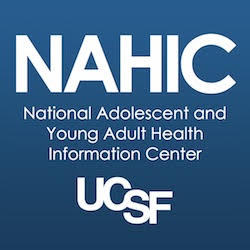Introduction
Purpose
This document offers concrete strategies Title V agencies and others can use to advance young adult health. Along with these strategies, we share real-world examples, resources and an overview of relevant activities throughout the US. Examples have been identified as part of interviews with a sample of state Title V agencies and a review of state-level policies and programs. While we place a particular focus on Title V, many of these strategies are applicable to any organization interested in helping young adults achieve better health and well-being.
Who are Young Adults?
Young adults (YAs) are defined in this document as individuals between the ages of 18-25 years old.
How does this Life Stage Differ?
Young adulthood represents a life stage when many individuals are gaining greater independence and developing lifelong health habits.
Compared to adolescents, the young adult population also tends to be more dispersed. In 2018, of recent high school graduates ages 16-241:
- 26% were in 2-year colleges
- 44% were in 4-year colleges
- 19% were employed & not in college
- 12% were neither employed nor in college
Although 18-24 year olds make up only 10% of the US population, they represent 21% of incarcerated adults.2 Additionally, more than 17,000 young adults age out of foster care each year.3 These marginalized populations have less access to health resources and are at higher risk of poor outcomes.
Young adults also interact with healthcare differently than adolescents. At age 18, young adults become legally responsible for their own care and must navigate a complex system of insurance and financing. The Patient Protection and Affordable Care Act of 2010 (ACA) extended health insurance coverage on parents’ insurance policies up to age 26. Although this extension of dependent health insurance has led to improved rates, young adults were the most uninsured age group in 2018, at 14.3% uninsured.4 It’s no surprise then that young adults also have the lowest healthcare utilization of any age group.5
Outside of healthcare, societal and economic trends have contributed to changes in traditional patterns of achieving developmental milestones. Relative to previous generations, young people today are less likely to have moved out of their family home, gotten married or become parents.6 Rising inequality, student debt and technological advances have also impacted this population in intertwining ways. With 74% of 18-25 year olds earning less than $25,000/year,7 many young adults face economic challenges that can impact their long-term health.

While social media and the internet serve as a major source of information for all ages, this is especially true for young people: 18-29 year olds make up the largest percent of news consumers on social media sites such as Instagram and Reddit.8 The rapid pace of change in technology means that youth engagement is especially important when designing social media outreach, among other efforts.
↑ (back to top)
Why Focus on Young Adults?
In many respects, young adults have a worse health profile than both adolescents and adults in their late twenties and early thirties. For example, young adults have the highest rate of death and injury from motor vehicles, mental health problems, sexually transmitted infections (STIs), and substance use.5
Young adulthood is frequently the age of onset for health problems including reproductive/sexual health issues and mental illness. Women aged 18-24 have the highest rate of unintended pregnancy among all age groups,9 and the median age of onset of mental disorders ranges from late teens to early 20s.10

At the same time, many of the adverse outcomes prevalent in young adults may be mitigated through education and prevention strategies. Young adulthood is thus a key turning point where public health professionals can impact a wide range of health issues.
Public health programs today most often include young adults with the general adult population or adolescents. In a number of states there are few to no tailored activities aimed at young adults. This is in spite of the fact that Title V agencies report that young adults represent a major portion of their target population in family planning and other areas.
Given the unique shifts in context – legal, health and financial – that occur in young adulthood, and YAs’ surprisingly poor but often preventable health outcomes, targeted programming for young adults can yield significant improvements on state and national performance measures. Yet, in spite of the variety of major health issues that impact young adults, thus far, they have received little focused policy attention at the federal and state level.
What can Title V Programs Do to Advance YA Health?
State Maternal and Child Health (MCH)/Title V programs are well-positioned to make a difference in young adults’ well-being. Often the skills required to effectively promote young adult health have already been cultivated in these organizations, but need to be further adapted to fit the young adult population.
Thus, by leveraging existing expertise and building relationships with local partners, Title V agencies can play a key role in educating young adults about their health and improving access to and quality of young adult health services. Ultimately, through increased awareness and prevention in the young adult years, the goal is to improve health outcomes across the life course.

 University of California San Francisco
University of California San Francisco


